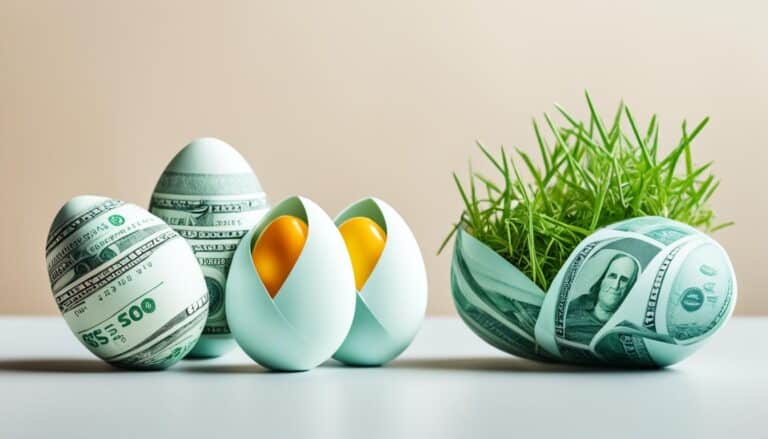Compound Interest and Retirement Planning: How Starting Early Can Secure Your Financial Future
According to Albert Einstein,“Compound interest is the eighth wonder of the world. He who understands it, earns it … he who doesn’t … pays it. For an average person, the decision to start putting money aside for savings is difficult to make. Lots of people struggle to keep their expenses lower than their income. This class of people continuously experiences serious lifestyle creep such that when their income increases, more responsibilities and expenses come up in their lives preventing them from having positive cash flow in their finances.
Given this common financial challenge, saving to invest might quickly seem like an unnecessary life endeavor. However, the longer we stall on this decision, the more time we lose and the more potential income we lose. Starting to save for investment early is beneficial to you over a period of time, as you benefit from compound interest. By starting early, your money can grow way beyond your original investment.
So, even though it may be tough to start saving money for investment, the advantage of compound interest is one major factor that should encourage you to start.
In Canada, compound interest works well in investment vehicles such as RRSPs, TFSAs, RESPs, and Universal Life Insurance Policies. RRSPs make your savings grow by letting you reinvest your earnings tax-free. TFSAs, on the other hand, let your investments increase without taxing the profits.
Starting your savings plan early also fights off the effects of inflation. Inflation is the loss of purchasing power of the currency. In Canada, between 1987 and 2024, inflation has ranged between 0.17% and 6.8%. As of May 2024, inflation is 2.9%. Let’s pick a round figure of 3% annually for average inflation. It means that any “idle funds” will lose 3% of its purchasing power annually. It ensures you have financial comfort and flexibility when you’re older.
Key Takeaways
- Setting long-term financial goals early harnesses the power of compound interest.
- Registered Retirement Savings Plans (RRSPs) and Tax-Free Savings Accounts (TFSAs) in Canada are powerful investment tools for maximizing returns.
- Early retirement savings provide financial flexibility and well-being in later years.
What is Compound Interest
Compound interest is often called the “eighth wonder of the world.” With compound interest you earn interest on both your original amount and on the interest that has already been added. In compound interest, your principal (Amount Invested) does not stay the same. The earned interest is added to it to make a new principal. Your earnings get reinvested. This lets compounding interest work its magic, turning small investments into big amounts over a period of time.
The true power of compound interest shows when you add more money regularly. For example, starting with $100,000 and adding $1,000 every month at a 6% rate can make you a millionaire in 25 years. It’s important to know how often your interest compounds since it affects growth speed. Unlike simple interest, compound interest grows your savings faster because it adds interest on top of interest.
Putting your money in trusted assets like stocks, mutual funds, and ETFs can boost your returns. When you want to choose assets to invest in, do your due diligence. Know the Annual Percentage Yeild (Possible gain or loss) of the funds and the Management Expense Ratio (Cost of managing the funds).
When you’ve decided on the assets to invest in, set up your investment accounts and start early. Investing even small amounts like $100 a month from age 20 to 60 can significantly increase your wealth. This strategy can turn $48,000 in savings into nearly $200,000, thanks to compound interest’s effect5.

Simple Interest vs Compound Interest
It’s important to understand the difference between simple interest and compound interest. This knowledge can help you grow your savings and investments.
Simple interest is only on the original amount. Imagine you lend your friend a loan of $2000 (principal) at an agreed simple interest of 10% monthly for 10 months. Let’s assume that your friend will pay both the principal and accrued interest at the end of the 10th month. This implies that your friend will pay you $200 (interest) every month. With simple interest, your principal remains the same. Every month, your friend will calculate 10% interest on the loan using $2000 as the principal.
Meanwhile, compound interest adds interest on interest. Let’s use the same scenario. You gave your trusted friend a $2,000 loan at a compound interest of 10% for 10 months. In the first month to your principal will accrue a $200 interest. In the second month, your principal becomes $2200 and accrues an interest of $220. In the third month, your principal becomes $2420 and accrues an interest of $242. In just three months using this example, simple interest will earn you $600 ($200+$200+$200)while compound interest will earn you $662 ($200+$220+$242). This shows how compound interest can outgrow simple interest over time.
The table below shows the accrued interest over 10 months using the example above. By reinvesting earned interest, compound interest speeds up your wealth growth. Using it wisely in investments can significantly increase your savings over time. The total interest amount can vary a lot depending on how often it’s compounded.
| Month | Principal ($) | Simple Interest ($) | Principal ($) | Compound Interest ($) |
| 1 | 500 | 50 | 500 | 50 |
| 2 | 500 | 50 | 550 | 55 |
| 3 | 500 | 50 | 605 | 60.5 |
| 4 | 500 | 50 | 665.5 | 66.55 |
| 5 | 500 | 50 | 732.05 | 73.2 |
| 6 | 500 | 50 | 805.25 | 80.25 |
| 7 | 500 | 50 | 885.5 | 88.55 |
| 8 | 500 | 50 | 974.05 | 97.4 |
| 9 | 500 | 50 | 1071.45 | 107.15 |
| 10 | 500 | 50 | 1178.6 | 117.86 |
| Total | 500 | 500 +500 = 1000 | 1178.6 | 1178.6+117.86 = 1296.46 |
After 10 months, $500 invested at the rate of 10% per month gives a total of $1,296.46 using compound interest vs $1000 using simple interest at the same rate.
Note: The example shared above is a simplistic depiction of the difference between simple interest and compound interest. In real-life scenarios, other factors such as type of fund, fluctuation, fees, etc may influence your result.
Compound Interest in reverse
While it makes financial sense to earn compound interest on your investment, you must avoid loan/debt schemes where you pay compound interest. A $10,000 loan at 5% simple interest per annum costs you $5000 in five years. With the same conditions but compounded annually, the interest jumps to $6288.95. It’s vital to understand the impact of compounding on both savings and debt. As a rule of thumb, you should earn in compound interest and pay in simple interest.
The mathematics behind compound interest
By reinvesting earned interest, compound interest speeds up your wealth growth. Using it wisely in investments can significantly increase your savings over time. The amount of total interest can vary a lot depending on how often it’s compounded.
The way to calculate simple and compound interest highlights their differences. Simple interest formula is *Simple Interest = P x r x n*. For compound interest, it’s *A = P(1 + r/n)^(nt)*.
- A is the total amount of money accumulated after n years (including interest).
- P is the principal amount (the initial amount of money).
- r is the annual interest rate (in decimal form).
- n is the number of times that interest is compounded per year.
- n is the number of times that interest is compounded per year.
- t is the time the money is invested for, in years.
For example, $10,000 borrowed at 5% interest for three years would accrue $1,500 in simple interest but $1,576.25 in compound interest8. Compound interest earns you more over time.
A $50,000 car loan at 3% interest over five years yields $7,500 in interest with simple calculation. But with more compounding, like monthly, interest can soar, affecting both savers and borrowers negatively. For instance, such frequent compounding could lead to $329,877 in interest over five years.
Clearly, using compound interest wisely in investments can greatly boost savings and ensure financial security. The gap between simple and compound interest is significant for all financial decisions.

Practical Application of compound interest in retirement saving
Understanding compound interest is key when saving for retirement. Start early to see your savings grow thanks to compound interest. For example, starting at 25 and saving $500 a month with a 6% annual return rate will get you $1,000,724 by age 65. But, if you start at 45 with $1,000 monthly, you’ll only have $464,361.
How to Maximize Compound Interest
The compound interest formula already reveals the factors that can affect it. They include
- Time (Start Early): Time is a major factor that can help anyone maximize compound interest.
- Buy assets that compound more frequently: The number of times your asset compounds per year affects the yearly interest. An asset that compounds monthly (at the same rate) will earn more than one that compounds quarterly
- Contribute Regularly: Making regular contributions to your investment increases your principal and makes it grow even faster. The higher the principal, the higher the potential return (other things being equal).
- Reinvest Earnings: Reinvesting earned interest is the holy grail of compound interest. Accrued interest can earn further interest in the future if you don’t withdraw it.
- Tax-advantaged investment vehicles: Investing in a tax-advantaged account allows you to keep more money you would have paid to the government in tax using a non-registered account.
The table below shows the advantages of starting early. It gives a scenario of someone who started early with a smaller monthly contribution versus someone who started 20 years later but with a higher monthly contribution.
| Age Started | Monthly Contribution | Annual Return Rate | Total Savings by Age 65 |
|---|---|---|---|
| 25 | $500 | 6% | $1,000,724 |
| 45 | $1,000 | 6% | $464,361 |
The rule of 72
The Rule of 72 is a simple concept that helps you know when your investment will double. It tells you how many years it will take. You just divide 72 by your expected interest rate. For example, at a 6% interest rate on a $10,000 investment, your money doubles in about 12 years14. For a quicker double, like in 10 years, you’d need a 7% interest rate14. This trick can give you a rough estimate for your investment and retirement plan.
Say you’re getting a 6% return annually. Then, your money doubles in 12 years. This is true whether you invest in mutual funds, GICs, or corporate bonds. Knowing this rule can change how you plan for your retirement.
Disclaimer: Please note that the rule of 72 is not always mathematically accurate especially when the interest rate is 20% and over. Also, take note that the result might change depending on changes in the expected return on the investment in question.
Final Thoughts
As we wrap up, it’s important to reflect on our financial goals and the steps we need to take to achieve them. Whether it’s saving for retirement or ensuring a comfortable future, planning is essential. Compound interest is your safest route to the future you desire. Start from where you are; start with what you have; make regular contributions to your investments and keep a close look.
Also, make sure you’re taking full advantage of the tax-advantaged accounts available to Canadian residents. Depending on which of the accounts you choose, you can enjoy growing your money pre-tax and/or growing your money tax-free.
Finally, while you can DIY everything shared in this post, you can do way better if you have an experienced financial professional hold you by the hand and lead you. Reach out to me and let’s plan your financial future together.
FAQ
What is compound interest?
Have you heard of the “eighth wonder of the world?” It’s called compound interest. This method lets earnings from an investment earn even more over time. It happens by reinvesting what you earn, so you gain interest on your initial amount and the interest it makes.
How does compound interest benefit retirement planning?
When it comes to retirement, compound interest is your best friend. It can turn your savings into a lot more money over the years. If you start saving early, your investment has more time to grow, helping you beat inflation and giving you money freedom later on.
What is the difference between compound interest and simple interest?
Simple interest is pretty straightforward – it’s the interest on the money you first put in. On the other hand, compound interest is the interest on your initial money plus any interest you’ve already earned. Over time, compound interest means more money in your pocket compared to simple interest.
How do you calculate compound interest?
To figure out compound interest, use this formula: A = P(1 + r/n)^(nt). Here, A is what you end up with after n years, including interest. P is your starting amount, r is the yearly interest rate, n is how often interest is added each year, and t is how many years you invest.
What are some practical ways to maximize compound interest for retirement?
Want to make the most out of compound interest? Begin by saving early and sticking to it. Choose smart options like TFSA and RRSPs that have tax benefits. Set up an automatic savings plan and talk to a financial advisor for tips on growing your investment.
What is the Rule of 72 and how is it useful in retirement planning?
The Rule of 72 is a quick way to figure out when your investment will double. Just divide 72 by your interest rate. This rule helps you plan your finances and set goals for your retirement. It’s a handy tool for looking ahead.
What factors influence the growth of compound interest?
Several things affect compound interest growth. The amount you start with, the interest rate, how often interest is applied, and how long you invest matter. More compounding and longer investments mean your money has more chance to grow.

Ogunjobi Oluwamuyiwa Felix preferred to be called Muyiwa Felix, is a personal finance coach and Insurance advisor. He creates content that addresses the core of personal finance in Canada, the United States, and the world at large. Daily, he meets up with clients who are interested in financial risk management, income protection, wealth-building, retirement planning, and tax-efficient investing strategies.







